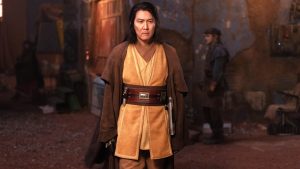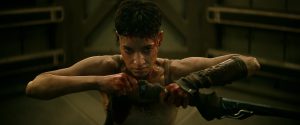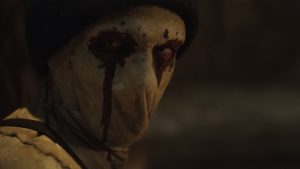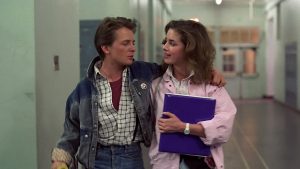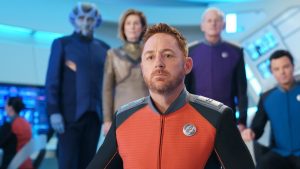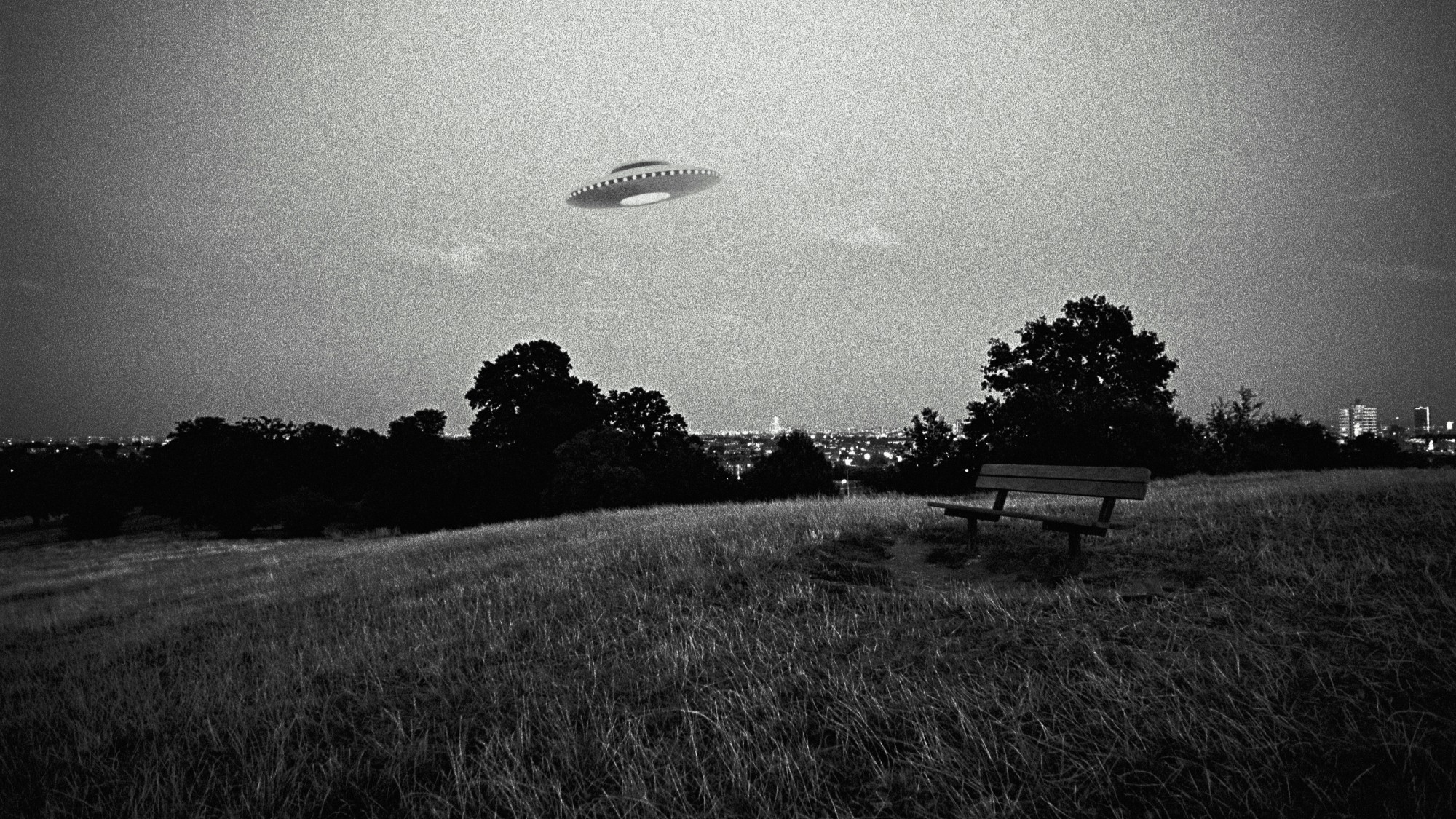
Steven Spielberg has had a lifelong fascination with alien beings from beyond the stars. When the legendary director was just 17, he made a nearly two-and-a-half-hour epic on his 8mm camera called Firelight, a film that he more or less remade 14 years later as Close Encounters of the Third Kind. That 1977 classic would be the first of three professional movies Spielberg would make about aliens arriving on our planet, the other two being E.T.: The Extra-Terrestrial (1982) and War of the Worlds (2005). And each trip into the extraterrestrial has led to one of the director’s most successful and acclaimed films (we’re not counting 2008’s Indiana Jones and the Kingdom of the Crystal Skull since Spielberg didn’t actually want aliens in the movie).
It’s also a subject that continues to fascinate the filmmaker, with Variety recently reporting that Spielberg’s next film is going to be another UFO story based on his own original idea. But of the many announced films that Spielberg never made (and there are a bunch), one continues to intrigue his fans decades after he began developing it: Night Skies. Pitched as the darker, nastier flipside to the friendly aliens in Close Encounters, Night Skies was meant to follow a group of extraterrestrial beings that land on Earth and begin to terrorize a family on their isolated farm.
The idea for Night Skies came to Spielberg after he heard about an alleged real-life incident while doing research for Close Encounters that involved a family under attack by extraterrestrials. But what exactly was the incident, and why is it famous in Ufology? How did it influence Night Skies, and how did Night Skies itself morph into an utterly different film altogether? Well…
The Real-Life Alien Attack Story
The inspiration for Night Skies was an incident that came to be best known as the Kelly-Hopkinsville Encounter (aka the Hopkinsville Goblins Case), which took place on Aug. 21, 1955 in Christian County, Kentucky, near the towns of Kelly and Hopkinsville. That evening, a dozen people—five adults and seven children, almost all related by blood or marriage—arrived at the latter community’s police station and claimed they had been under siege for more than four hours at a farmhouse rented by family matriarch Glennie Lankford.
A family friend named Billy Ray Taylor claimed to see a spacecraft land behind some trees near the house after which the people in the building, including Glennie’s three adult sons and their wives, began seeing dark, short, non-human figures with what were described as large eyes, claw-like hands, and other possible appendages on their heads, floating outside the house and popping up at the windows. The creatures, allegedly as many as 12 or 15 of them, were spotted coming out of the woods from the direction in which Taylor had seen the alleged flying saucer land.
According to accounts of the incident, the men in the house, including Taylor and Lankford’s son Elmer “Lucky” Sutton, reportedly grabbed guns and started shooting at the invaders through the windows. According to contemporary reports, when police arrived later to investigate, they observed a number of windows were shattered and there were loads of spent ammunition around the property. No evidence of the creatures was found, although there was reportedly a green glow emanating from the trees nearby. It had disappeared the next day and was widely assumed to be “foxfire,” a bioluminescent fungus that grows on wood.
Press coverage at the time was sensational, especially when word got around that the U.S. Air Force had sent officers to investigate the incident. The officers who did arrive on the scene were actually from a local Army base and were summoned to assist by the local police. Over the years, other Ufologists and skeptics have done further research and determined that the Lankford-Sutton clan (who claimed that the creatures returned at 3:30 a.m. that morning, prompting them to pack up and flee) only fired their guns perhaps four times, with a single bullet hole found in one screen.
It was later ascertained that Taylor might have merely seen a shooting star, not a spaceship, and it was theorized that the Lankford-Sutton men were actually firing at a pair of belligerent birds known as great horned owls, which would correspond in some aspects with the description of the alleged aliens as floating creatures with big eyes ranging from two to four feet tall. The Air Force eventually deemed the incident a hoax in its Project Blue Book files, but it nevertheless persists as a major event in the history of close encounters and UFO studies. And it certainly lit a creative fire in the mind of Steven Spielberg.
How the Kelly-Hopkinsville Incident Led to Night Skies
Spielberg heard the story of the Kentucky encounter from famed Ufologist J. Allen Hynek and later pitched a version of it to Columbia Pictures when the studio requested that he make a sequel to Close Encounters. Spielberg wasn’t interested in a direct sequel but thought the idea of doing a dark version of the Close Encounters story (with aliens that were sinister and not just mischievous, like the ones in that film) was appealing.
The proposed film was originally titled Watch the Skies, and Spielberg wasn’t sure if he wanted to direct or just produce it. One director he had in mind was Tobe Hooper, the horror filmmaker behind The Texas Chain Saw Massacre and Eaten Alive. According to David Hughes’ book, The Greatest Sci-Fi Movies Never Made, Spielberg’s original idea centered on a farmhouse under attack by 11 aliens who initially try to communicate with the animals and livestock around the property. They eventually dissect the animals (a nod to the popular “cattle mutilation” theories involving UFOs) and turn their attention toward the humans trapped in the house.
While Spielberg was shooting Raiders of the Lost Ark, he initially asked the film’s screenwriter Lawrence Kasdan to pen a script for Night Skies (as it came to be called), but the latter was busy working on The Empire Strikes Back. Spielberg’s next choice was John Sayles, who had written the original Piranha and The Howling and would later direct independent classics like Return of the Secaucus 7 and Lone Star. Spielberg also hired legendary VFX makeup artist Rick Baker to design the creatures while still being keen on having Hooper direct the sci-fi/horror hybrid.
Sayles’ script featured five aliens, one of whom becomes friendly with a child in the family and ends up being abandoned on Earth at the end of the film by his more malevolent companions. At some point in the process, that relationship began to interest Spielberg more while he grew disenchanted with the film’s more violent, horrific elements. While shooting Raiders in Tunisia, he discussed the Night Skies script with screenwriter Melissa Mathison—who was on the set visiting her then-boyfriend, Harrison Ford—and asked her to write a new treatment focusing on the boy and the alien who befriends him.
Columbia Pictures was not enamored with the way that Night Skies had morphed into what was then called E.T. and Me, with studio execs thinking that there was no appetite for what they felt was a sentimental family movie. Spielberg managed to make a deal with the studio in which he restored scenes to Close Encounters for a re-release called The Special Edition while Columbia sold its interest in Night Skies and the new version of the film to Universal, which Spielberg had now made his home. After completing Raiders of the Lost Ark, Spielberg officially began shooting his next film, now retitled E.T.: The Extra-Terrestrial, in September 1981.
Night Skies Lives On
E.T., of course, became one of the biggest cinematic hits of all time, climbing to the top of the list of all-time box office champs before being unseated 12 years later by Spielberg himself via Jurassic Park. The film is regarded as a family classic and one of Spielberg’s many masterpieces, with much of its imagery and the cuddly little alien himself becoming iconic parts of pop culture. It could be argued that Night Skies died so that E.T. could live, to the benefit and enjoyment of generations of moviegoers.
Except that—like the folklore surrounding the Kelly-Hopkinsville Encounter itself—Night Skies refused to go away. Still interested in the idea of a family assaulted by sinister forces, if not beings from another world, Spielberg brought the basic idea to MGM Studios with the premise now being that a suburban family comes under attack from supernatural entities. Since he was at work on E.T., Spielberg could not direct the movie himself but he produced it and collaborated on the script with writers Michael Grais and Mark Victor after his first choice to pen the film—none other than Stephen King—was unavailable.
Although Tobe Hooper had declined the offer to direct the original iteration of Night Skies, Spielberg recruited him to direct what now became known as Poltergeist. Hooper said in later years that the idea for the film came from him as well, although that is disputed, and of course the well-chronicled question of whether Hooper or Spielberg actually directed the movie has become part of the lore surrounding both filmmakers (Hooper passed away in 2017).
Poltergeist, released in the summer of 1982, same as E.T., became an enormous hit as well as a horror classic, its own imagery and story elements entering the zeitgeist in the same way that its more sweet-natured kissing cousin did. And although Night Skies never did come to fruition in its original form, its DNA is very much part of both movies, not to mention the Spielberg-produced Gremlins, his own later version of War of the Worlds, and countless other movies (knockoffs or otherwise) about everyday families confronting unseen, incomprehensible, or malignant forces. It can all be traced back to that Kentucky farmhouse in 1955… and maybe two particularly angry birds.
The post The Real-Life UFO Story That Led to a Famously Unmade Steven Spielberg Movie appeared first on Den of Geek.
